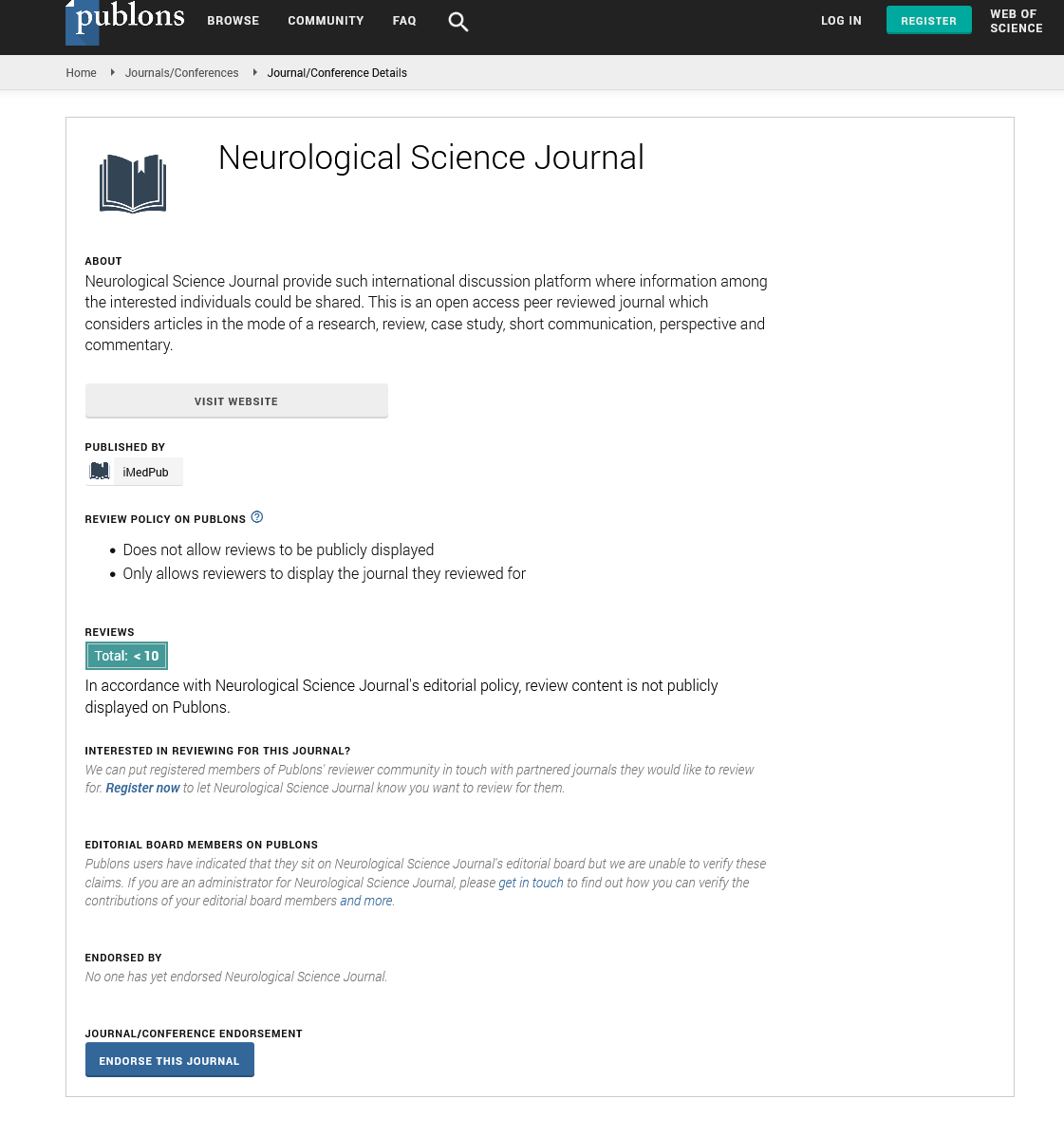Abstract
Split foot sign in Amyotrophic lateral sclerosis (ALS)
To evaluate the pattern of the extensor digitorum brevis (EDB), the abductor hallucis (AH) muscles’ involvement in ALS and Abductor digiti minimi (ADM) looking for the possibility of having split foot sign like split hand one. Background: The muscle patterns involved in amyotrophic lateral sclerosis (ALS) remains controversial. split leg and split hand signs were assessed previously. However; foot muscles involvement could be not equal in ALS like in case of split hand sign with preference for lateral hand muscles. Methods: We recruited 11 patients with ALS and 12 healthy controls. Compound Muscle Action Potentials (CMAPs) were recorded over the EDB, ADM and AH muscles in all subjects. EDB/AH and ADM/AH ratios were obtained and compared between patients and controls. Results: The EDB/AH and ADM/AH CMAP amplitude ratio were significantly reduced in patients with ALS (0.26 +_ 0.16, P = 0.001) and (0.27 +_ 0.10, p = 0.001) respectively. These findings indicate a greater loss of lower motor neurons innervating the EDB and ADM and dysfunction of spinal motor neurons innervating these muscles. The EDB/AH and ADM/AH CMAP ratios reliably differentiated patients from HCs, with AUCs of 0.42 (95% CI 0.00-0.9) and 0.41 (95% CI 0.00–0.95), sensitivities of 78%, and specificities of 100% for both with cut-off ratios of 0.12 and 0.15 recpectively. Conclusions: These results suggest preferential EDB and ADM compared to AH involvement in ALS. The EDB/AH and ADM/AH CMAP ratios robustly differentiated patients with ALS from HCs, which might facilitate an earlier identification of ALS patients.
Author(s): Sawsan Albaazi
Abstract | Full-Text | PDF
Share This Article
Google Scholar citation report
Citations : 11
Neurological Science Journal received 11 citations as per Google Scholar report
Neurological Science Journal peer review process verified at publons
Abstracted/Indexed in
- Google Scholar
- Publons
Open Access Journals
- Aquaculture & Veterinary Science
- Chemistry & Chemical Sciences
- Clinical Sciences
- Engineering
- General Science
- Genetics & Molecular Biology
- Health Care & Nursing
- Immunology & Microbiology
- Materials Science
- Mathematics & Physics
- Medical Sciences
- Neurology & Psychiatry
- Oncology & Cancer Science
- Pharmaceutical Sciences
